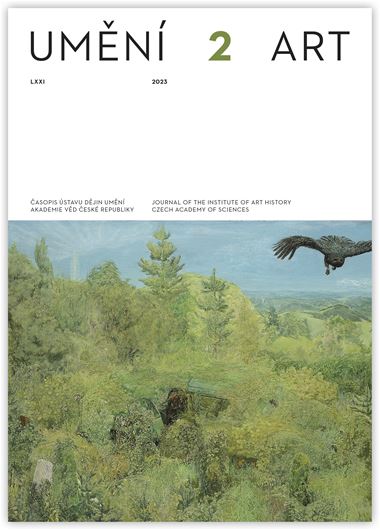Petr Jindra
Vladivoj Kotyza: Epiphany of a Moment in the World
This study focuses on the artwork of Vladivoj Kotyza (b. 1943), who was one of the few artists of his generation to develop the trend known as Fantastic Realism This trend emerged in the late 1960s as an offshoot of imaginative art. While early phase of Kotyza’s work has been discussed in recent catalogue texts, the remarkable development of this solitary artist in the following decades has gone unnoticed by art historians. Kotyza’s phenomenological sensibility was already evident in his Fantastic Realist paintings, which led him to a specific perception of natural and urban landscapes. He saw reality as a fixed epiphany, the mechanism of which stemmed from the metaphysical neutralization of three correlates of Kotyza’s pictorial language: the object as ‘remnant,’ time frozen in the magical moment of midday, and space perceived as an all-consuming depth. In the last decade Kotyza has been preoccupied with a different problem. His work in this period comprises an extensive series of drawings that attempt to depict natural phenomena in their living, present form. Kotyza’s drawing formula is firmly rooted in the Renaissance depiction of the actual world. His drawings resemble in their analytical yet vivid nature the studies of Albrecht Dürer and Leonardo da Vinci, who sought to depict the singular natural reality based on the nominalist metaphysics of the late Middle Ages, or rather the then rediscovered epicurean atomism of Lucretius‘ De rerum natura, which influenced High Renaissance art in Italy. But Kotyza’s work from this period also recalls Cézanne and his vision of nature. These references place Kotyza’s drawings in their historical context of relationships in which particular influences are less important than the actual, living depiction of the natural world: an image that presents rather than represents. The text describes Kotyza’s method and interprets his quest for a living representation of nature through the phenomenology of apperception and the creative act, using Lucretius‘ atomism as a philosophical and poetic metaphor of epiphany as the here-and-now experience of a concrete moment in the world. This epiphany represents the fundamental intention that pervades Kotyza’s diverse and thoughtful iconography to the most recent nature-themed drawings.
Author's email:
jindra@zpc-galerie.cz
DOI: HTTPS://DOI.ORG/10.54759/ART-2023-0204
Full-text in the Digital Library of the Czech Academy of Sciences:
https://kramerius.lib.cas.cz/uuid/uuid:947642c4-1103-4895-90e5-5fd82bd462b2
< back

